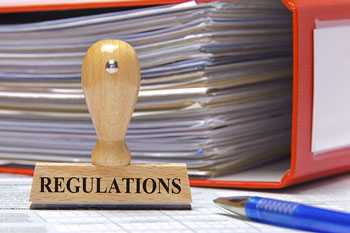NOISE AND HEARING LOSS PREVENTION
Guidance and Regulations

In the United States, occupational regulations and standards were established to protect workers against the health effects of exposure to hazards substances and agents when certain values (or limits) are reached.
NIOSH – Criteria For a Recommended Standard: Occupational Noise Exposure
NIOSH establishes Recommended Exposure Limits (REL) for noise based on the best available science and practice. The NIOSH REL for noise is 85 decibels, using the A-weighting frequency response (often written as dBA) over an 8-hour average, usually referred to as Time-Weighted Average (TWA). Exposures at or above this level are considered hazardous.
OSHA – Occupational noise exposure 1910.95
OSHA sets legal limits on noise exposure in the workplace. These limits are based on a worker's time weighted average over an 8 hour day. With noise, OSHA's permissible exposure limit (PEL) is 90 dBA for all workers for an 8 hour day.
Occupational standards specify a maximum allowable daily noise dose, expressed in percentages. For example, a person exposed to 85 dBA per NIOSH or 90 dBA per OSHA over an 8-hour work shift, will reach 100% of their daily noise dose. The noise dose is based on both the sound exposure level and how long it lasts (duration) so for each increase or 3-dB (NIOSH) or 5-dB (OSHA) in noise levels, the duration of the exposure should be cut in half (this is what’s referred to as exchange rates in standards). The following table illustrates the relationship between sound exposure levels and durations for both NIOSH and OSHA.
MSHA – Mining Safety and Health Administration, 30 CFR Part 62, Occupational Noise Exposure
The purpose of these standards is to prevent the occurrence and reduce the progression of occupational noise-induced hearing loss among miners. This part sets forth mandatory health standards for each surface and underground metal, nonmetal, and coal mine subject to the Federal Mine Safety and Health Act of 1977. The provisions of this part became effective September 13, 2000.
| Time to reach 100% noise dose | Exposure level per NIOSH REL | Exposure level per OSHA PEL |
|---|---|---|
| 8 hours | 85 dBA | 90 dBA |
| 4 hours | 88 dBA | 95 dBA |
| 2 hours | 91 dBA | 100 dBA |
| 1 hour | 94 dBA | 105 dBA |
| 30 minutes | 97 dBA | 110 dBA |
| 15 minutes | 100 dBA | 115 dBA |
- Page last reviewed: September 22, 2016
- Page last updated: November 29, 2016
- Content source:
- National Institute for Occupational Safety and Health Division of Applied Research and Technology



 ShareCompartir
ShareCompartir